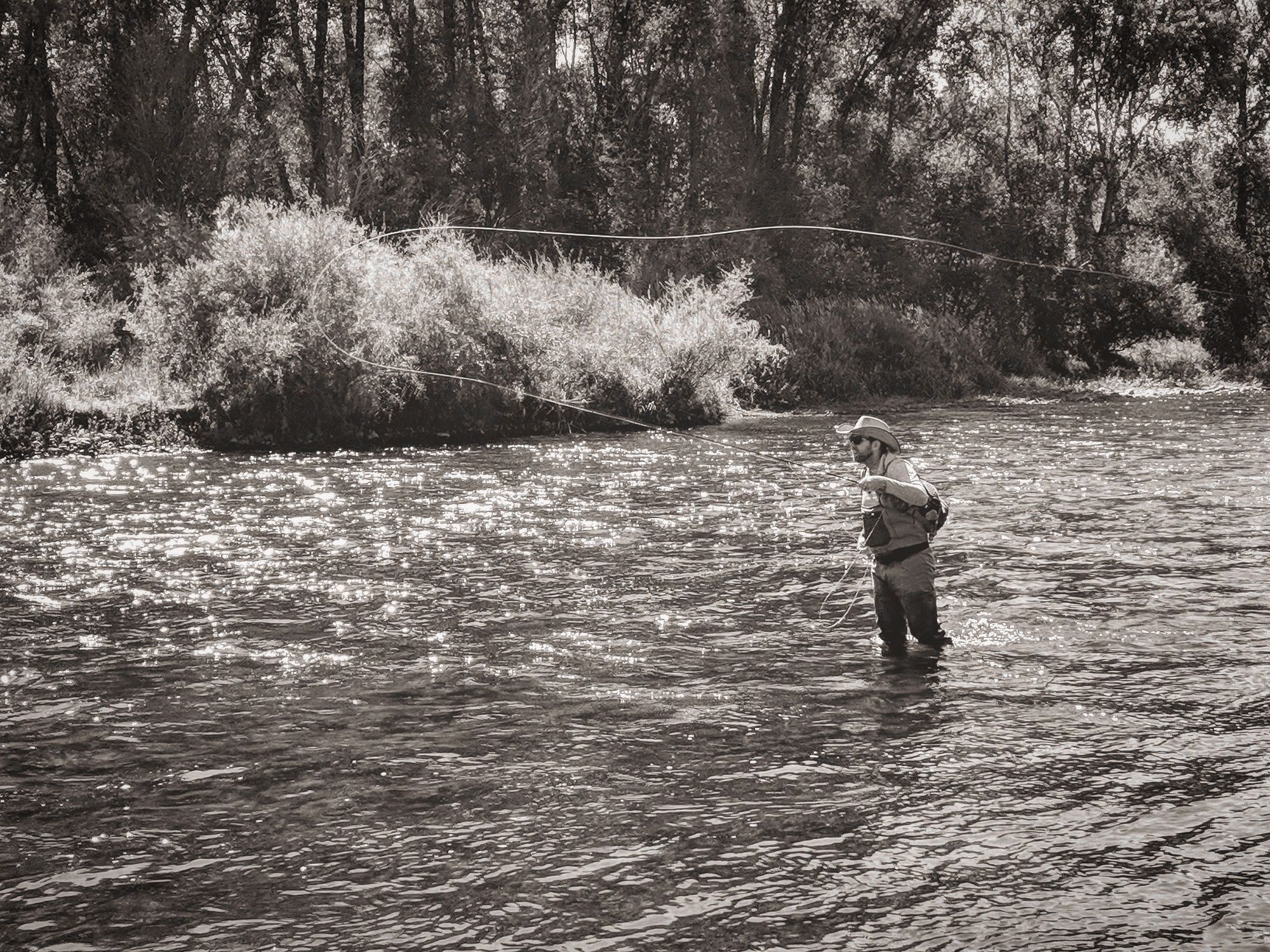Lefty or Righty? Your Dominant Hand Affects Your Presentation
Tips for casting in Fly Fishing: Have you ever thought about how your casting arm affects your fly presentation? Look no further.

August 2019
Your ability to maintain a drag-free drift is highly influenced by which side of the river you stand on... and it all has to do with which arm you use to cast.
As a left-handed person, I believe I am more aware of the differences between righties and lefties because I'm constantly reminded of how certain things just don't work for me compared to a right-handed person. For example, I will never truly enjoy using scissors.
On the river, I have been able to field test this theory alongside right-handed fly-casters. Interestingly, the first example of this dexterity-driven-dilemma arose when flipping tiny dry flies to trout holding in a lake inlet in Colorado. Looking directly across the river, the water flowed from right to left as three of us traded off casting to the rising trout. We were all able to pull them up to the surface, but my two companions consistently got last-minute refusals at the fly, likely due to micro-drag. Fortunately, I was able to overcome the refusals without a single change to my position or rig. And the only difference we could come up with was my casting arm.
With more trips came more side-by-side opportunities to compare lefties vs. righties in varying situations, and a general theory developed.

For any person, regardless of casting arm, the best drifts happen when their casting arm is the arm closest to the middle of the river when looking upriver (if you assume that they are casting upstream). The caster will be able to achieve their longest drifts of drag-free flotation from this position. This position allows their line to more easily fall over the main channel, and with a good mend they can almost always avoid the eddies and swirls that drag flies. Also, mends are more easily achieved since the casting arm has a greater reach over the water.
If the situation is flipped, you lessen the reach of the rod, increase casting difficulty, and increase the need to mend. This becomes painfully apparent when casting dry flies on a slow-flowing river with picky fish.
Especially when casting to large rising trout, sneak into your best casting position. Righties, get on river right to cast, and lefties, get on river left to cast, for the best chances at landing a rising trout (river left is defined as if you're floating downstream). Or, just remember to get your casting shoulder closest to the middle of the river.
Of course, if the river is too deep or wading is too difficult, you'll have to make due with whatever you get. Don't risk it just to get into a favorable position, especially during periods of high run-off.Pro tip: Interestingly enough, if you're high-stick nymphing, the opposite can hold true as you have a shorter distance between you and your flies.


